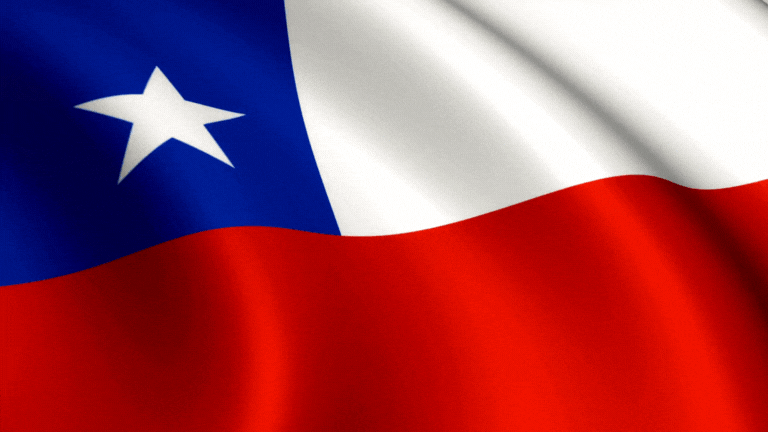Please be aware that this article may contain links to products and services we recommend. If you click on any of these links, we may earn a commission at no extra cost to you. We only endorse products and services that we believe will add value to our readers. Learn more here.
Chile Flag: History & Symbolism
Hack The Quiz
5/8/20243 min read
This article explores the history and symbolism of the Chile flag, detailing Chile’s location in South America and explaining how the flag’s design elements reflect the country’s history, geography, and its fight for independence.
Where is Chile?
Chile is a long, narrow country located along the southwestern coast of South America. It stretches from the Andes Mountains in the east to the Pacific Ocean in the west, and from the dry Atacama Desert in the north to the cold southern regions of Patagonia. Chile shares borders with Peru to the north, Bolivia to the northeast, and Argentina to the east.
Chile gained its independence from Spain on September 18, 1810, and its national flag, adopted shortly after, has since become a symbol of the country’s freedom, resilience, and natural beauty.
The History of the Chile Flag
The current flag of Chile was officially adopted on October 18, 1817, following Chile’s victory in the Battle of Chacabuco, which was a key moment in its struggle for independence from Spanish rule. The flag is also known as "La Estrella Solitaria" or "The Lone Star" because of the prominent star featured on its design.
Before the adoption of the current flag, Chile had used various other flags during its earlier stages of independence, but the flag designed in 1817 became the enduring national symbol. The flag’s colors and design were meant to reflect Chile’s fight for freedom, its natural landscapes, and its sovereignty as a new nation.
Since its adoption, the Chilean flag has been a source of national pride, flown on important national holidays such as Independence Day and used to represent Chile internationally.
Breaking Down the Chile Flag’s Design
The flag of Chile is made up of two horizontal bands—white on top and red on the bottom—with a blue square in the top left corner containing a single white star. Each part of the flag’s design holds significant meaning tied to Chile’s geography and history.
Let’s break down the elements of the flag:
The White Band
The white band at the top of the flag symbolizes the snow-capped Andes Mountains, which form the eastern border of Chile. The Andes are an important part of Chilean identity, as they shape much of the country’s geography and influence its climate.
The Red Band
The red band at the bottom of the flag represents the blood that was shed by Chilean patriots during the fight for independence. It honors the sacrifices made by those who fought for freedom from Spanish rule.
The Blue Square
The blue square in the top left corner symbolizes the clear skies of Chile, which are especially notable in the country’s northern regions, such as the Atacama Desert. Chile is known for its beautiful, clear skies, which have made the country a global center for astronomy.
The Lone Star
The single white star in the blue square, known as the Lone Star, symbolizes Chile’s independence and sovereignty as a nation. It also represents the guiding principles of the Chilean people, including honor and progress.
Final Thoughts
The flag of Chile is a bold and meaningful symbol of the country’s geography, history, and national pride. The white and blue colors represent Chile’s natural beauty, from the towering Andes Mountains to the clear skies over its deserts, while the red stripe honors those who fought for Chile’s independence. The lone star stands as a reminder of Chile’s sovereignty and the guiding values that unite its people.
Since its adoption in 1817, the flag has been a symbol of national pride, flown during national celebrations and international events. It continues to be a powerful representation of Chile’s journey to independence and its place in South America and the world.
Expand your mind ...
Explore trivia that broadens your understanding and knowledge of the world.
WE ARE HERE FOR YOU
JOIN US and hack the quiz
info@hackthequiz.com
© 2024. All rights reserved.



